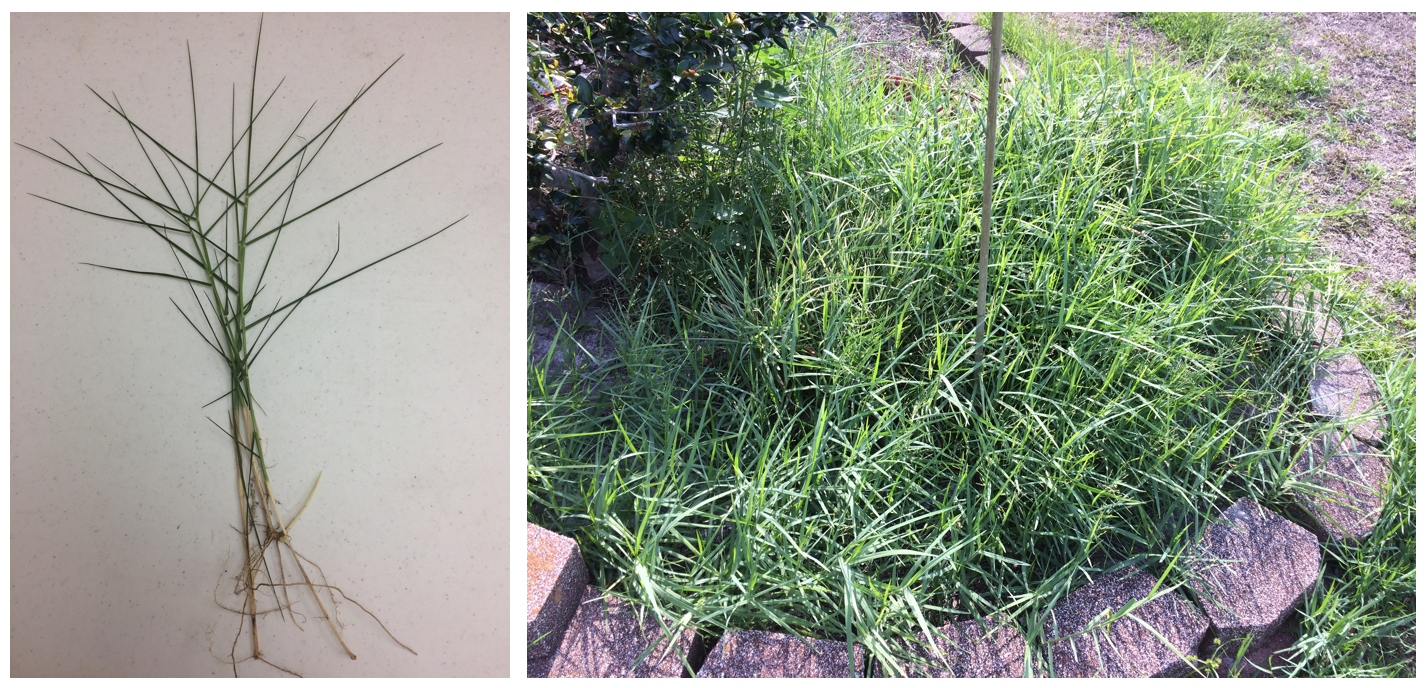
Photo: Tordpedograss (Panicum reopens). Credit: Ray Bodrey
Tordpedograss (Panicum reopens) is one of the most concerning weeds in Florida, and has become a significant weed problem in the Panhandle. This weed’s favorite habitat is in or near ponds and ditches, but will spread across lawns, turf fields, and pastures.
A native grass of both Africa and Asia, torpedograss was introduced through seed in the U.S in the late 1800’s as a forage crop for livestock. Torpedograss is in the family Poaceae, along with other grasses such as the persistent invasive threat, cogongrass, as well as common bermudagrass. Torpedograss gets its name from the sharply pointed tips. Not only is it exceptionally fast spreading, it can grow as tall as 3 feet. Torpedograss seed typically has poor germination, so in our climate it primarily relies on rhizome expansion.
Torpedograss has tendencies to choke out and completely take over native vegetation. Agronomist have been concerned with torpedograss for years in South Florida. In 1950, (Hodges and Jones) the University of Florida agricultural experimental station warned: “Torpedograss is a serious weed when established in farm or grove land and indiscriminate planting without the regard to future crops or adjoining land is dangerous.”
[youtube https://www.youtube.com/watch?v=QVSk1J-QPLo]
–
So, what is the impact of torpedograss on Florida? Since 1992, torpedograss has taken over 70% of Florida’s public waterways. Lake Okeechobee is considered ground zero with approximately 7,000 acres of native marsh now displaced. These dense matts of grass can impede water flow in stormwater applications and restrict usage of irrigation holding ponds.
How do you manage this invasive grass?
Infestation prevention can be accomplished by controlling the rhizome expansion. This is easier said than done, as a small rhizome fragment left behind will no doubt cause re-establishment. Keeping the infestation at bay, by controlling the spread at waterways is key.
For IPM (integrated pest management) solutions follow these steps:
For cultural management, invasive plants tend to quickly establish in open or recently tilled areas. So, prescribed burns. land clearing, and mowing are methods that tend to promote infestations. A healthy, diverse landscape with native or species with non-invasive tendencies will provide a level of defense. Mechanical control is not very effective. Tilling the land only spreads the rhizomes through fragmentation. There are few biological controls, although cattle and goats will graze it, they may also help spread the grass. Glyphosate (Roundup, etc.) at a 2-3% solution, and imazapyr (Arsenal, Chopper or Habitat) at 0.5 to 1 % solution are effective. A non-ionic surfactant is needed to ensure the chemical sticks to the narrow leaves. Keep in mind, these herbicides are systemic, meaning they are absorbed and move through out the plant tissue. Be sure to minimize over spray damage of desirable plants, especially related to drift. Imazapyr also provides soil activity, which is good for controlling this pest. However, this chemical will injur or kil desirable hardwood tree species such as live oaks. Torpedograss is much more difficult to treat in or around water, and generally requires multiple applications to completely control.
For more information on identifying or controlling torpedograss or other invasive species, contact your local county extension office.
Information for this article provided by the UF/IFAS Center for Aquatic and Invasive Plants: Torpedograss, and the Wetlands Weeds Journal article “Torpedograss – Forage Gone Wild” by Ken Langeland & Brian Smith of UF/IFAS and Charles Hanlon of the South Florida Water Management District
- Managing Pine Stands for Straw Production - January 10, 2025
- Disaster Preparedness for the Ranch - June 21, 2024
- Winter Storm Damage to Your Honeybee Operation? Federal Disaster Assistance Program Could Help - January 12, 2024
